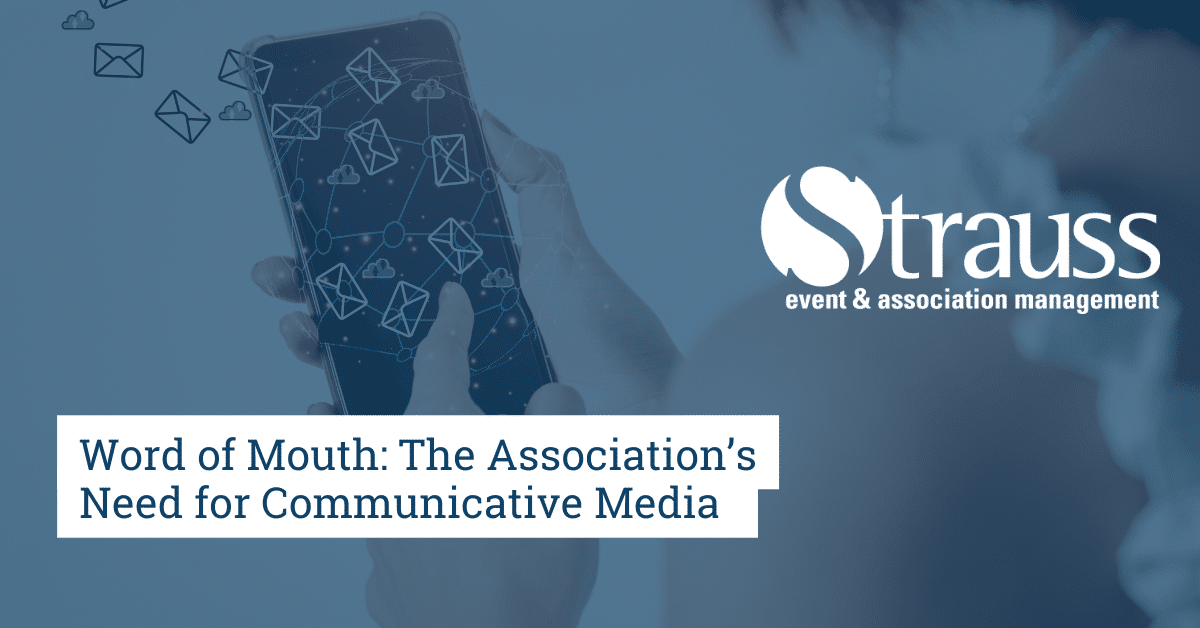No longer do we live in the days where messenger pigeons carried letters to home. It’s plain to see that we are experiencing the digital age, especially since now almost all correspondence is done over video chat and email. At the risk of stating the obvious, digital communications are where it’s at.
For an association, members should receive regular updates on their industry and community. This communication connects association members to each other and to the association’s leadership. On the other hand, it is also crucial for an association to produce content for external use as well. Finally, every association can benefit from a healthy social media presence.
Internal Communications
An association is a tight knit community of professionals within an industry. One necessity for every association is to keep these professionals connected. In our digital world, we can maintain this connection even amidst the pandemic that keeps us physically apart.
One great piece of regularized content is a weekly newsletter. Not only will a newsletter keep members updated on industry and community events, but it is also a chance to interact with members via poll questions, member spotlights, and member-written blogs. A weekly newsletter is also a great place for members to advertise products and services to the rest of the membership. E-newsletters are also a great place to congratulate members for their membership-anniversaries, award victories, and other accomplishments. Additionally, this type of media allows an association to bring its website to members on a regular basis without them having to find it online.
For associations whose members utilize each other’s services, it is necessary to maintain an open line of communication for quick updates like internet or power outages. An ongoing opportunity for contact between an association and its members adds to the return-on-investment for membership. Read Creating Web Content to Keep Members Engaged to learn more on how your association can add value through communications.
External Communications
As mentioned earlier, an association is a group of likeminded industry professionals. So, one goal for every association should be creating a platform for the profession of its members. The public should know exactly what kind of products or services members can provide. Even the most obscure professions should be clarified so any layperson can understand the full scope of the industry. This is a key objective for any association.
Associations should make it a priority to advocate for the profession it represents. Every profession has little-known crannies in their scope of services, and that’s where its representative association can make an impact. For example, in health-related associations, sharing blog posts or infographics that share the unique services which members offer is crucial for members and the industry itself.
Sometimes, an association represents a very clear industry, or a very niche industry. In these cases, the public (and members’ target market) are likely well versed in the industry. Therefore, an association’s communications to the public can be more focused on industry news.
Social Media
You want people to be talking, spreading the word, and sharing updates about the industry and about members. How do you get them talking? Social media is the number one way to create buzz around an association. The ability to instantly share industry news, member advertisements, and association information is right at your fingertips. Why not make use of that?
In a previous article, I discuss Social Media for Associations, and how you can maximize engagement and visibility.
Utilizing all these channels of communication, your association creates return on investment for members, and an important source of information for the public. Don’t take communication lightly, however. All of what I’ve shared here must be executed clearly and precisely – and with excellent grammar! Communication is one of the most important components that will lead your association to success.
For more on sending communicative correspondence to members and the public, read How to Choose and Use Association Communication Channels Efficiently.

